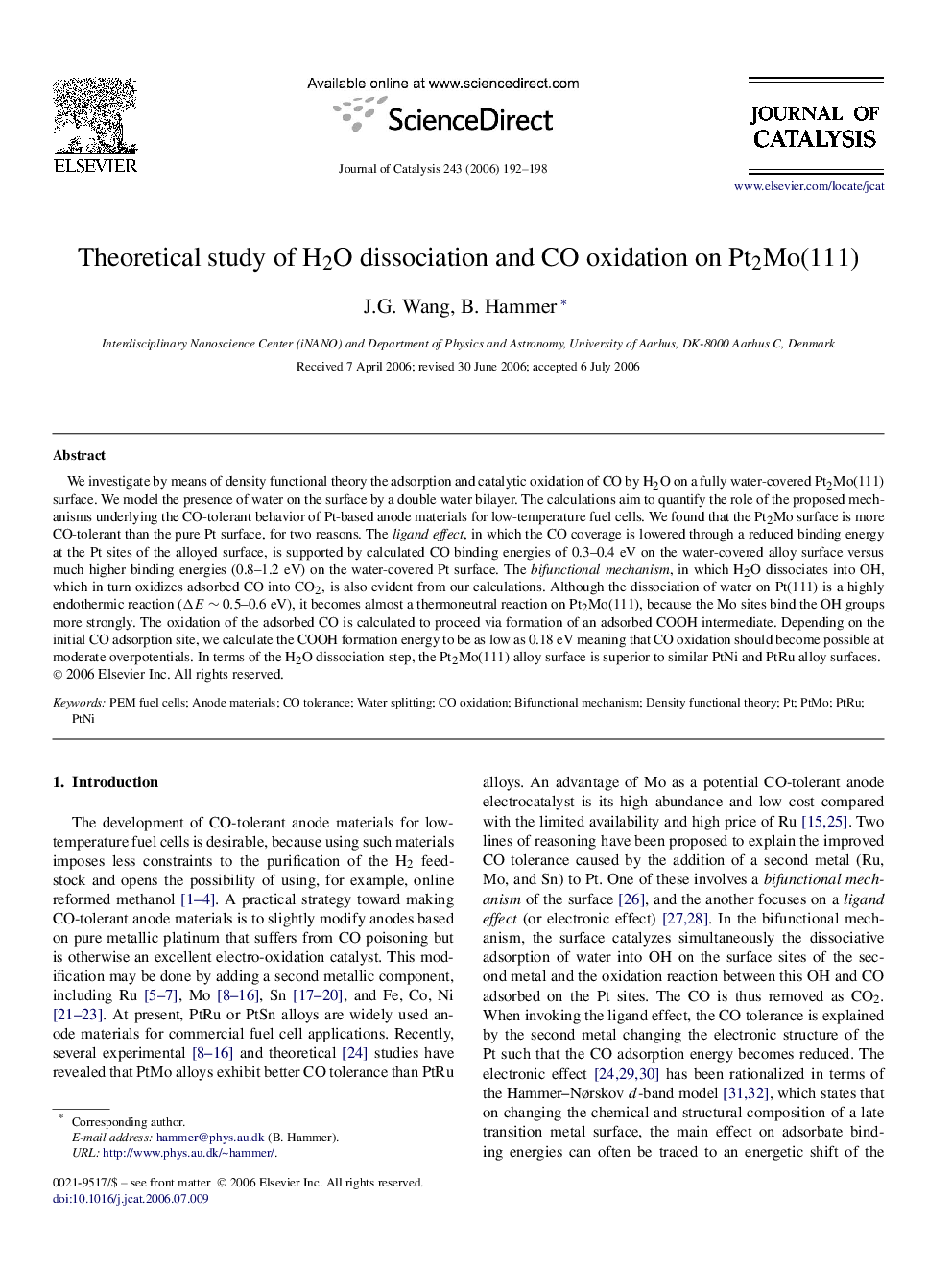| کد مقاله | کد نشریه | سال انتشار | مقاله انگلیسی | نسخه تمام متن |
|---|---|---|---|---|
| 63451 | 47688 | 2006 | 7 صفحه PDF | دانلود رایگان |

We investigate by means of density functional theory the adsorption and catalytic oxidation of CO by H2O on a fully water-covered Pt2Mo(111) surface. We model the presence of water on the surface by a double water bilayer. The calculations aim to quantify the role of the proposed mechanisms underlying the CO-tolerant behavior of Pt-based anode materials for low-temperature fuel cells. We found that the Pt2Mo surface is more CO-tolerant than the pure Pt surface, for two reasons. The ligand effect, in which the CO coverage is lowered through a reduced binding energy at the Pt sites of the alloyed surface, is supported by calculated CO binding energies of 0.3–0.4 eV on the water-covered alloy surface versus much higher binding energies (0.8–1.2 eV) on the water-covered Pt surface. The bifunctional mechanism, in which H2O dissociates into OH, which in turn oxidizes adsorbed CO into CO2, is also evident from our calculations. Although the dissociation of water on Pt(111) is a highly endothermic reaction (ΔE∼0.5–0.6 eVΔE∼0.5–0.6 eV), it becomes almost a thermoneutral reaction on Pt2Mo(111), because the Mo sites bind the OH groups more strongly. The oxidation of the adsorbed CO is calculated to proceed via formation of an adsorbed COOH intermediate. Depending on the initial CO adsorption site, we calculate the COOH formation energy to be as low as 0.18 eV meaning that CO oxidation should become possible at moderate overpotentials. In terms of the H2O dissociation step, the Pt2Mo(111) alloy surface is superior to similar PtNi and PtRu alloy surfaces.
Journal: Journal of Catalysis - Volume 243, Issue 1, 1 October 2006, Pages 192–198